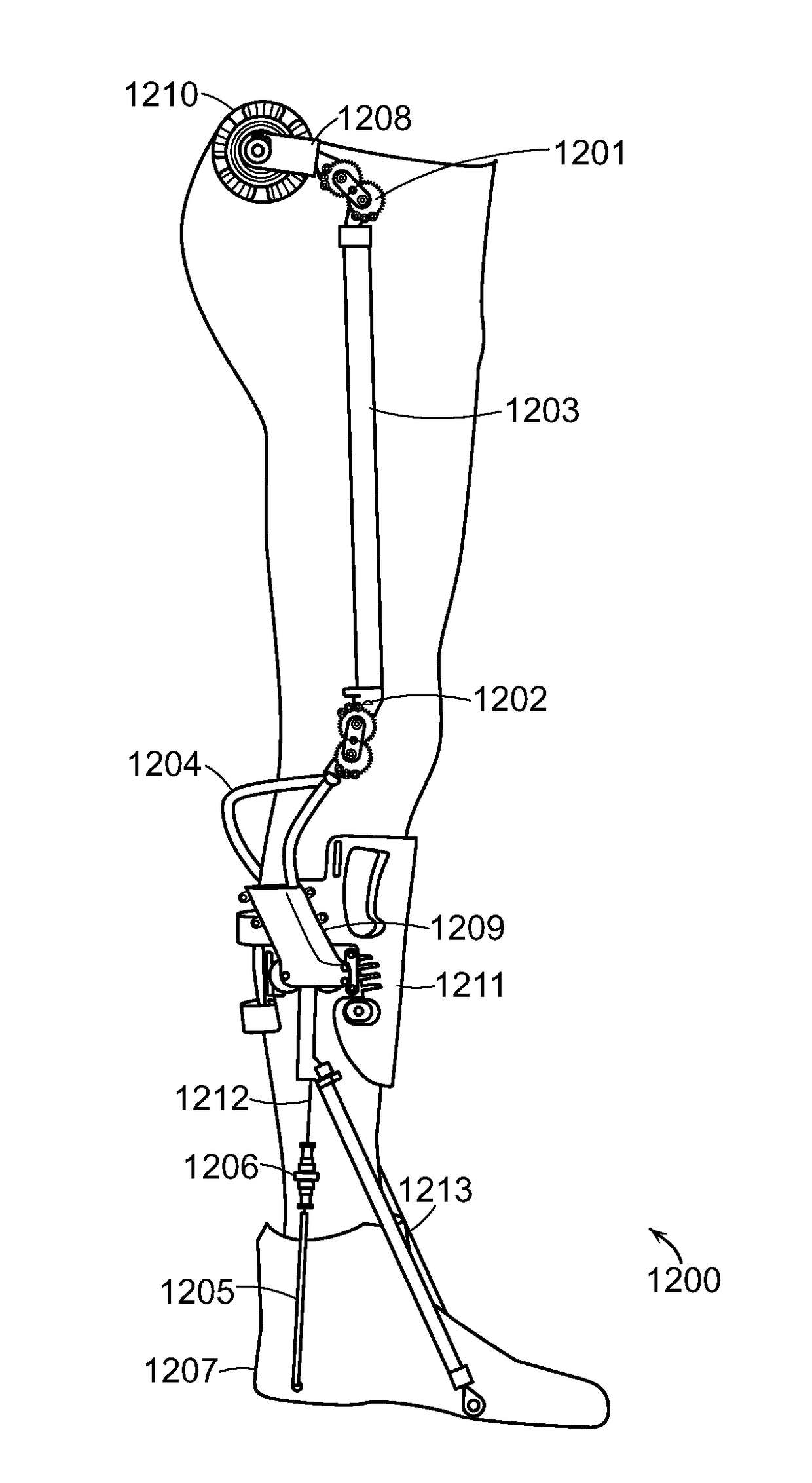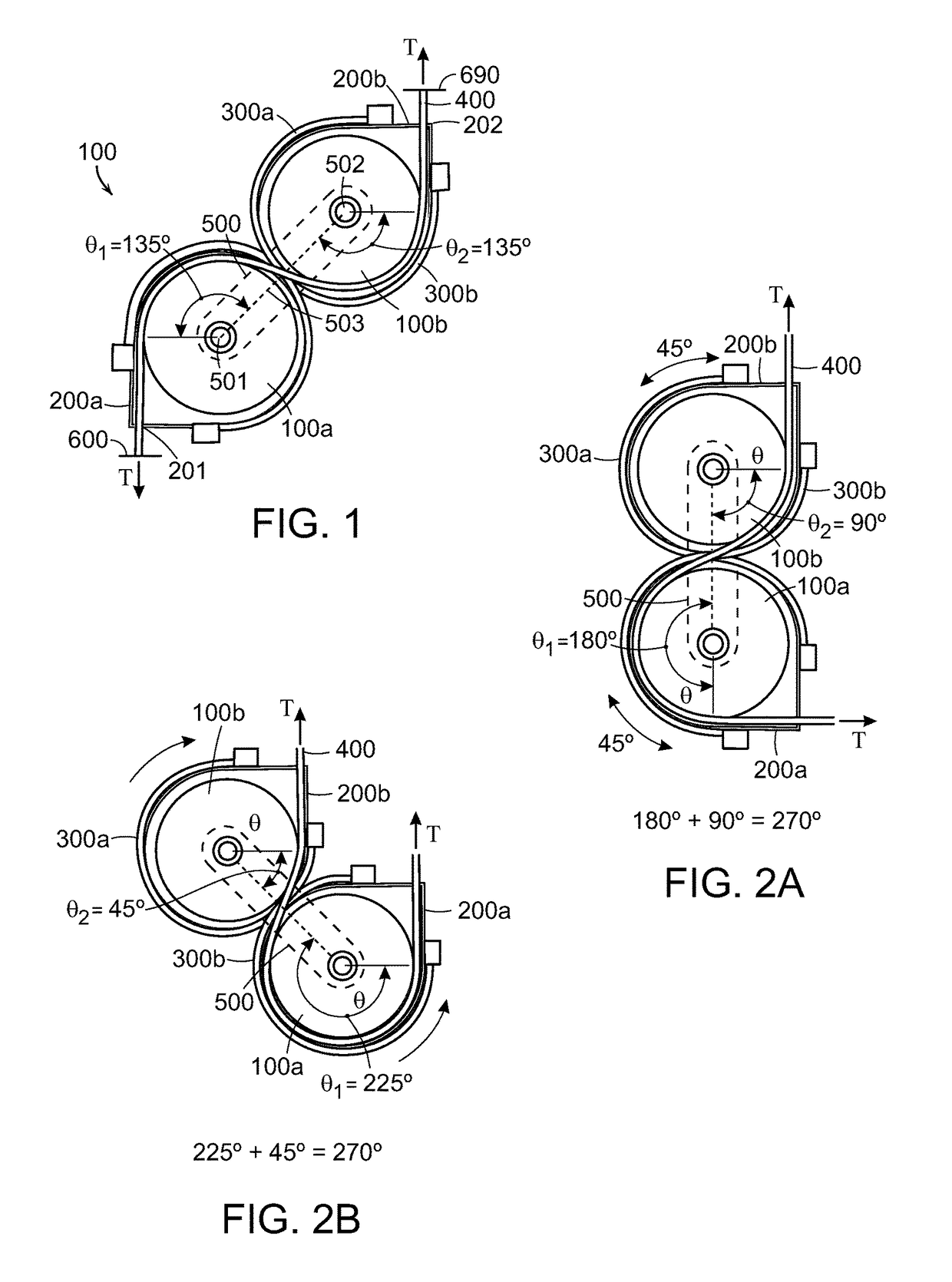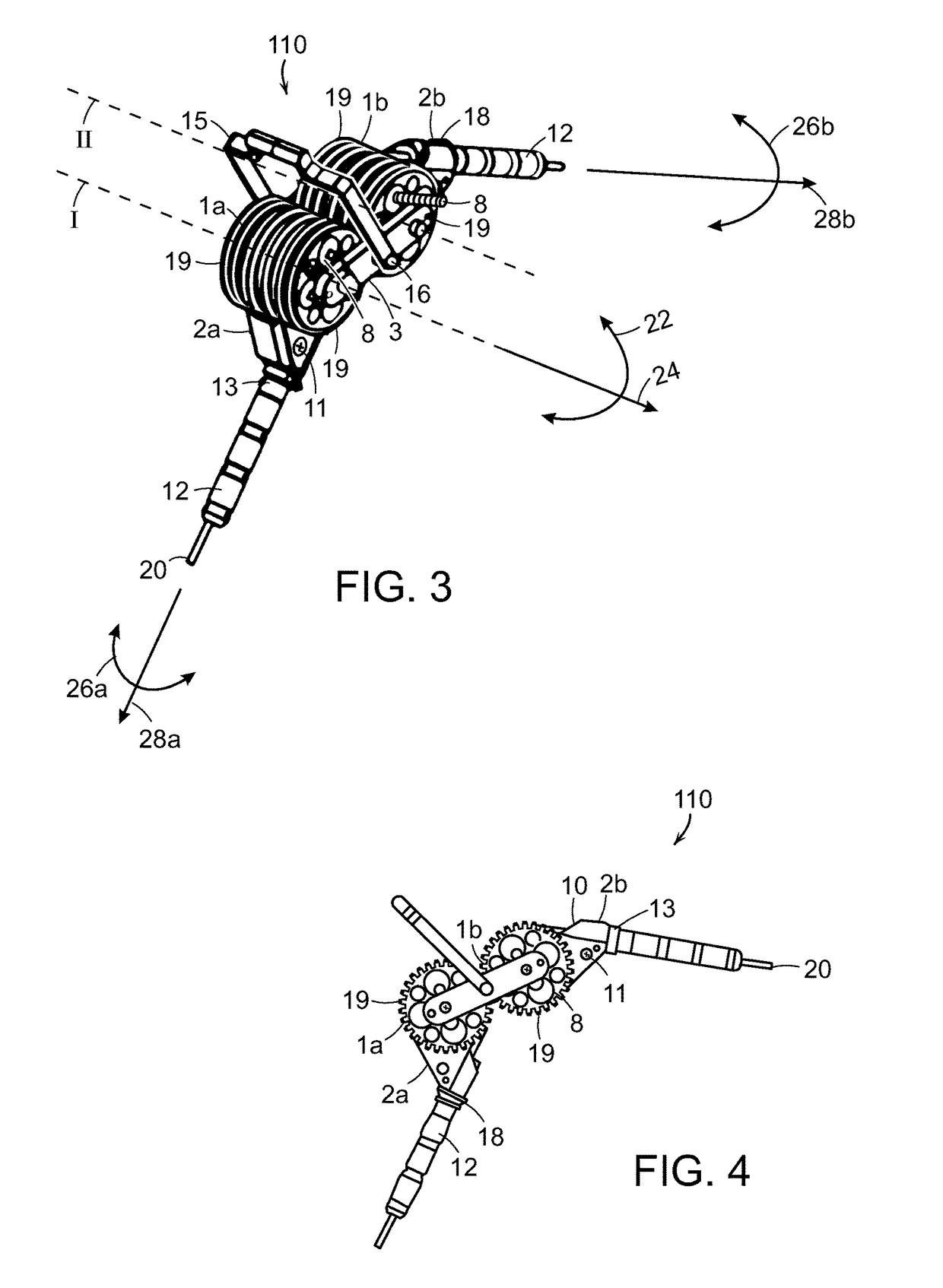High Performance Free Rolling Cable Transmission
a transmission cable and high-performance technology, applied in the direction of prosthesis, manufacturing tools, gearing, etc., can solve the problems of limiting the size and flexibility of the system, poor control performance, and usually complex and bulky, and achieves low frictional force, efficient transmission of motion and mechanical power, and high efficiency
- Summary
- Abstract
- Description
- Claims
- Application Information
AI Technical Summary
Benefits of technology
Problems solved by technology
Method used
Image
Examples
embodiment 1400
[0040]When inner cable 400 is under tension T, it tends to push two pulleys 100a, 100b away from each other, rotating the whole transmission mechanism. However, agonist and antagonist tendons 300a, 300b and external cable housings contribute to the resultant reaction force on each housing 200a and 200b, balancing the resultant force on the associated pulleys 100a and 100b, respectively. Therefore, the total sum of forces, except the weight, on rotating arm 500, is always zero. Accordingly, even if inner cable 400 is under great tension, transmission mechanism 100 is free to rotate and thus free to translate. Agonist and antagonist tendons 300a, 300b can be substituted with alternative coupling components that keep a 1:1 angular velocity ratio between two pulley housings 200a, 200b, such as a pair of gears, belts, linkages, etc. (See, e.g., gears 19 of FIGS. 3-6). Moreover, the angular velocity ratio between two pulley housings 200a, 200b can be other than 1:1, such as that the radiu...
first embodiment
[0056]Cable housings 612 are attached to pulley housings 602a, 602b by adapters 613 and C-clips 610. Thrust bushings 618 between cable housings 612 and pulley housing 602a, 602benable cable housings 612 to rotate with respect to the pulley housings 602a, 602b about an axis orthogonal to the centers of rotation of the pulley housings. Accordingly, transmission 120 is free to rotate in three-dimensional space, in the same way as the first embodiment shown in FIG. 3.
[0057]Pulleys 601a, 601b are free to rotate with respect to the associated pulley housings 602a, 602b but are driven by inner cable 620. From the input end through one cable housing 612, inner cable 620 wraps around one of two pulleys 601a, 601b, crosses the line of the centers of pulleys 601a, 601b, and then wraps around the other pulley 601 in the opposite direction, going to the output end through the other cable housing 612. Inner cable 620 can transmit motion and power from the input to the output, driving the pulleys ...
PUM
 Login to View More
Login to View More Abstract
Description
Claims
Application Information
 Login to View More
Login to View More - R&D
- Intellectual Property
- Life Sciences
- Materials
- Tech Scout
- Unparalleled Data Quality
- Higher Quality Content
- 60% Fewer Hallucinations
Browse by: Latest US Patents, China's latest patents, Technical Efficacy Thesaurus, Application Domain, Technology Topic, Popular Technical Reports.
© 2025 PatSnap. All rights reserved.Legal|Privacy policy|Modern Slavery Act Transparency Statement|Sitemap|About US| Contact US: help@patsnap.com



